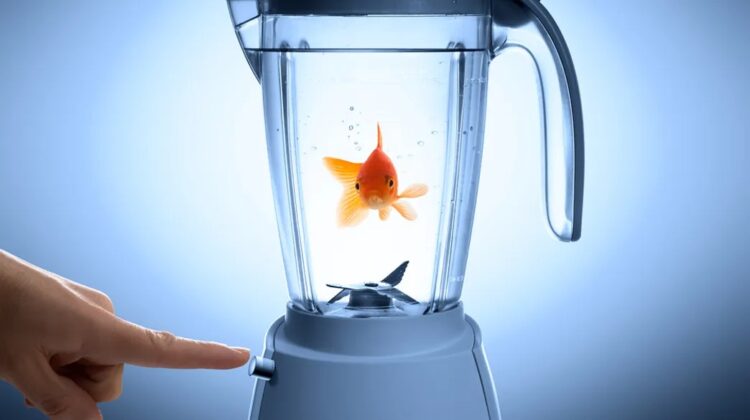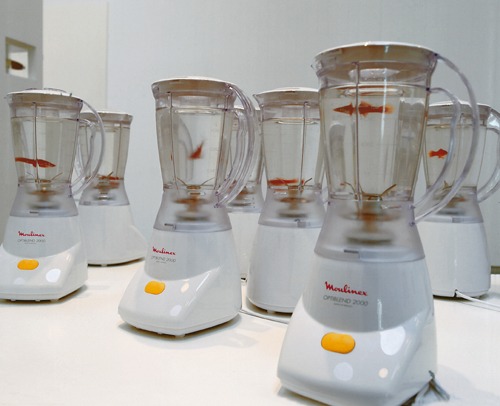
Throughout history, there have been cases of people doing heinous acts for no other reason than the fact that they can. The Stanford Prison experiment demonstrated that given a little power, a person would easily begin to mistreat peers of their own free will; a public art piece by Marina Abramovich demonstrated that simply handing a gun and instructing random bystanders to “do as they wish” was enough to make them almost commit murder.
These are only a few examples of how easy it is to manipulate ordinary people into doing horrible things, and one museum “experiment” in 2000 went even farther.
An “art” work called “Helena & El Pascador” by the somewhat-infamous Marco Evaristti debuted at the Trapholt Museum in Denmark, presenting museum-goers with 10 blenders filled with water and a single goldfish swimming around the blades in each. Visitors were offered two options: click the enormous “ON” button and kill the fish (for no apparent reason), or don’t touch the button and let the fish survive.
According to the BBC, the work was intended to drive individuals to “do battle with their conscience.”
“It was a protest against what was going on in the world, against the cynicism, the cruelty that pervades the world in which we live,” Evaristti went on.
Perhaps the piece would have been more effective if the blenders had been disconnected; nonetheless, the blenders were totally real, and the ON button actually worked.
While most people did not hit the button, at least one visitor did, and in a flurry of brutal cruelty, he killed two goldfish.

Complaints quickly poured in about the fact that the blenders were plugged in, and the police ordered museum owner Peter Meyer to unplug the blenders immediately. Meyer refused, and the police fined him 2,000 kroner ($205 at today’s exchange rate). Mayer refused to pay the fee in the interest of “creative freedom,” and was taken into court for animal cruelty.
Surprisingly, Meyer was acquitted of animal cruelty after veterinarian testimony revealed that the fish would have died practically instantaneously, avoiding extended agony. Meyer avoided all penalties, including the fine.
Years later, the piece remains an unsettling peek into certain humans’ sadism, as well as the fact that cruelty does not always require a reason or justification. Years later, Evaristti reappeared with another very disturbing “art” work in which he gave a dinner party featuring meatballs made of his own fat.

Leave a Reply